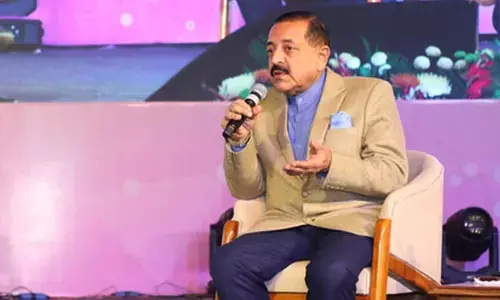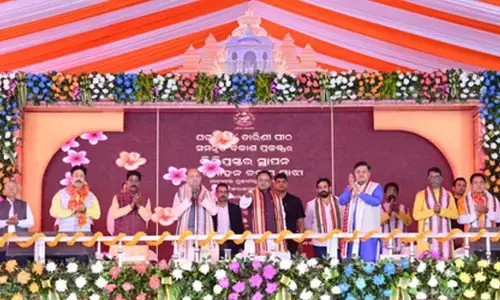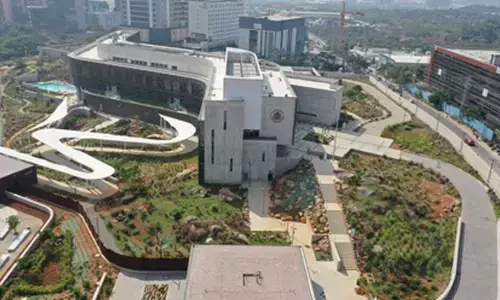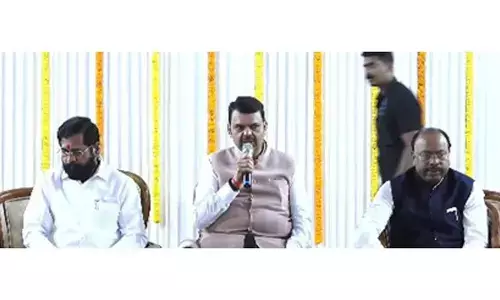Promote level-playing market structure

The Government of India recently introduced few notable reforms namely, one nation-one market, unfettered Essential Commodities Act and land use vide contract farming, PPP for the infrastructure of storage, logistics, all aimed to deliver PM Narendra Modi’s pet Atmanirbhar Bharat
The Government of India recently introduced few notable reforms namely, one nation-one market, unfettered Essential Commodities Act and land use vide contract farming, PPP for the infrastructure of storage, logistics, all aimed to deliver PM Narendra Modi's pet Atmanirbhar Bharat. NITI Aayog wants long term leasing of farmland up to fifty thousand hectares, power and fertilizer subsidies are to change and water will be regulated.
So, agriculture is poised to fundamental changes. We must open to agri-business as livelihood opportunities to innovators, investors, social entrepreneurs and the youth in products, technology, business models and services.
According to KS Gopal of Centre for Environment Concerns, Hyderabad, agriculture as "peasantry farming" will give way to it as business (agri-business). For instance, farmers cannot depend on minimum support price and of assured government procurement.
Instead, we it will give way to an era of customized production, price discovery, nationally linked markets and purchases by large corporations, food chains and exporters. Generic commodities will emerge as branded "farm to fork" products. We see signals: urban middle-class demand drives supply chains on what is produced and at what price. The fastest volume growth and higher price realization of farm incomes in agriculture GDP comes from horticulture, dairy, bamboo, etc.
This process will be transformative to bring and driven by big players, deep pockets, smart ICT technologies (Internet of things), remote management (electronics, machine learning and drones) and innovative business models, etc.
Bulk of the price constituents will no longer be the commodity per se but what "value" gets added in the chain to entice customers. Thus, who exercises power in the chain and marketplace will shape our food and rural economy and livelihoods. Global experience shows two or three large corporations control the entire chain to squeeze farmers, intermediaries and the consumers.
Markets are battles, brutal and fierce and its dynamics and architecture decides on who drives and who benefits and who will be subjugated and decimated. Market structures unleash dynamics to decide on how societal wealth is created, distributed, or diverted.
Urban areas and middle-class demand will be the focus of large supply chains driving what is produced, how, when, and at what price. We already see the fastest growing GDP in agriculture is coming from horticulture, dairy, bamboo, etc. They are high value and fastest growing with better returns to its producers.
After the First World War, farm tax shifted from grain to cash. This forced farmers to shift from food crops to cash crops leading to a drastic fall in production and availability of nutritious food crops of jowar, bajra, ragi and legumes. People starved. It buried the traditional rich soil health, plant synergy with water conservation farm practices.
In the 1990s we visited cotton suicide families to offer relief. The elder farmer father wept to say "why did our son gamble to earn on big risk income to end his life and leave a widow the kids, he loved. We could manage with what we have and had peace of mind. He orphaned us all". If the tax regime cash economy can cause such havoc, what will follow when the farm economy and its productive resources are usurped, re-directed by and controlled by powerful marketers?
Gopal narrated a real story encountered by him. He said that five years ago his diamond merchant friend suggested visiting a few farms in Gujarat and Rajasthan. It had farm managers, used leased lands, and engaged professional consultants. He met a consultant with no agriculture academic background (trained in digital), who flew from Nasik to Udaipur, a car picked him to come and guide farmers on multiple crops. Capital and operational costs were just an overnight call to their Mumbai investors.
In the presence of Gopal, an eight-acre pomegranate ready to harvest crop was paid Rs one crore and sixty lakhs! The buyer transferred money to Mumbai and on its receipt confirmation next day harvested, graded, loaded, and transported the fruit, all at the buyer's cost.
He said the punch line of farm managers was "there is big money in agriculture and what we are doing is a preparatory run to serve growing high-value food markets and safest for investors in Mumbai to address the vagaries, volatility, and vicissitudes in the world of commerce.
Basic to livelihood is money and the market is its major determinant of who has it, how much, the extent of autonomy and dependence, etc. Technology is a tool. The price of agriculture commodities multiplies three to four times between farmer production and sales to consumers. This is where the big money is.
It is crucial for farmers and rural people to build an effective value role in the markets and harvest its dividends.
In my previous article published on Sunday 28th June in Hans India, titled "Right Interventions for Regulatory Farming" I presented how Telangana has the best conditions to multiple and diversify agriculture production with safeguards of assured delivery to markets.
Plus, it has rich knowledge, innovation, and state of the art IT technology and business modelling talent. The article's focus was to grab this opportunity for half a million Telangana youth to be self-employed and earn decent incomes.
Against this background two immediate intervention areas could be considered. They aim to target the youth and women to develop skills in procuring, processing, packaging, money management, and market action.
It is an outcome of scientist skills and leadership vision. The state introduced and facilitated and incentivized the cultivation of Telangana Sona paddy on ten lakh acres. This is not just another variety of superfine rice but offers unique health-conscious consumer-centric features: lowest glycaemic index, a healthy combination of protein, energy, carbohydrates, niacin (vitamin B3), and less broken rice in milling, etc.
Here lies a unique opportunity for young and trained Telangana entrepreneurs to have a pie in the market structure and earn decent incomes. Women Self Help Groups (SHG) learned the tricks of the trade for years in Government paddy, maize, and red gram procurement.
Select the best teams and organizations like the Research and Innovation Circle of Hyderabad (RICH) to build their capacity as a guide to enter and succeed in the market place, starting with Telangana Sona. Apprentice support by Professor Jayashankar Telangana State Agricultural University (PJTSAU) will help the young and the SHGs to graduate to know on how to best serve the urban customer and supermarket segments vide value addition, branding, direct sales to customers etc.
Conceived and directed with the vision and leadership of KCR with the next genre technological capacities of RICH and agriculture scientists, bureaucrats, and farmers, Telangana will unleash the creative power and productive capabilities of its rural citizens. We must promote a level playing market structure for stakeholder auto-drive to deliver on equity and distribution of incomes.
It will maximize the dividends of six years of massive investments to develop agricultural production infrastructure in Telangana. KCR must lead the nation to reform the agri-business architecture to harvest state investments to shape market forces to harvest its dividends to revitalize rural Telangana.
















